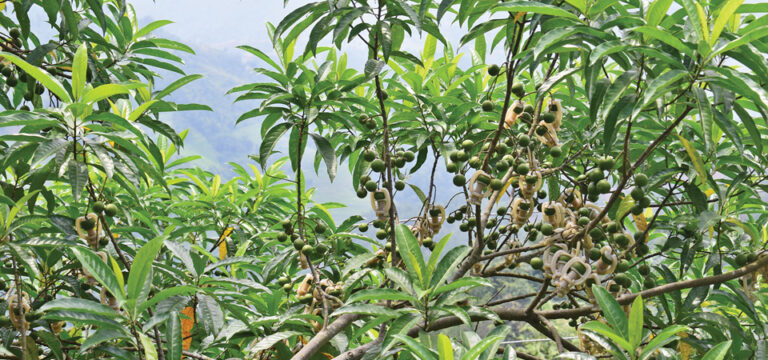
Most of the Rudrakshyas produced in the Arun Valley area of Nepal are exported to China, except for a small quantity to India. Until a few years ago, only Rudrakshyas with more than seven mouths were sold, but lately Rudrakshyas with five mouths are also getting the buyers.
Although Rudrakshya’s export to India is mostly for religious purpose, those exported to China are said to be used as decorative items.
Even the five-mouth Rudrakshyas, which were not sold previously, are being sold for millions of rupees per kilogram. Since the demand is higher in China, the Chinese traders are demanding more Rudrakshyas and purchasing them at higher prices.
However, Chinese traders don’t visit the villages themselves but take help from local Nepali traders. Some individuals have been working as mediators to bring Rudrakshyas from farmers to the market and Chinese traders.
According to Sanjay Dewan, a Rudrakshya trader from Khandbari, the current price of five-mouth Rudrakshya is between Rs. 700,000 to Rs. 1.6 million per kg as per the quality; the price of mukhadar Rudrakshya is up to Rs. 4 million each.
“With demands from Chinese traders, the price has gone up exponentially lately,” said Dewan.
“Earlier, only Indian traders used to buy mukhadar Rudrakshyas. After the arrival of the Chinese, all kinds of Rudrakshyas are getting good price,” Dewan added.
As per the locals, Chinese traders have a different taste. They are said to prefer a large-size and smooth Rudrakshya with five mouths.
However, the traders informed that the quality of Rudrakshyas produced in Nepal was still far from perfect.
Different technologies have been introduced to reshape Rudrakshyas as desired by the Chinese traders.
Rudrakshya seeds are tied with plastic clips to give them a flat shape.
The flattened and quality Rudrakshyas are formed when the growing grains are pressed from the lower and upper ends with plastic clips. Such clips are given to the farmers by local traders. Medicines have also been introduced to increase the size of Rudrakshya seeds and to make them smooth.
“Medicines are more effective than the clips,” said traders.
They said that after the flowering of Rudrakshyas, the medicine is applied to the plants and seeds several times which makes the seeds smooth and bigger in size. It is said that the Chinese traders give good price to the fruit that come out in the required size by applying medicines.
However, some argued that damaging the natural shape of Rudrakshyas was not a good step.
Although there is no statistics of the annual Rudrakshya trade, the traders said that the estimated annual turnover in the Arun Valley area is around Rs. 2 billion.
President of the Rudrakshya Entrepreneurs’ Association of Sankhuwasabha Chakra Bahadur Bisunkhe said that no one had the details of the transaction as no one has been able to fix a price for the sale and purchase of Rudrakshyas.
“The price of Rudrakshyas varies according to the trader and the price of sale and purchase is kept as secret as possible,” said Bisunkhe.
Source : TRN,






